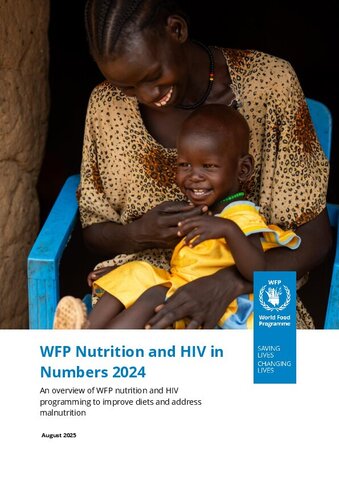
In 2024, WFP’s Nutrition and Food Quality Service advanced its global leadership in combating malnutrition amid overlapping humanitarian crises. From Gaza to the Sahel, conflict, climate shocks and rising food prices deepened nutrition insecurity.
The World Food Programme (WFP) delivered a record response grounded in equity, efficiency and innovation. Over 27.6 million people across 55 countries received nutrition-specific services, including:
- 16.5 million children aged 6–59 months
- 9.4 million pregnant and breastfeeding women and girls
- 1.7 million other adults and adolescents, including those in crisis contexts, with chronic illness, HIV, disabilities or caring for malnourished children.
WFP maintained a 92 percent recovery rate in treating moderate acute malnutrition (MAM), surpassing global standards, while introducing system innovations to strengthen impact at scale.
Digital transformation enabled real-time decision-making. Tools like CODA, now active in four countries, replaced paper-based systems with interoperable case management solutions. Data platforms, such as MIMI, FNG and NuVAC, informed national policies, fortified supply chains and targeted resources effectively.
WFP reaffirmed its role as the lead UN agency addressing nutrition needs of people living with HIV in emergencies. A global consultation was co-convened to revise inter-agency standards and address the dual vulnerabilities of HIV and food insecurity, amid climate change and displacement.
Additionally, 64 million people were reached through nutrition-sensitive programmes in social protection, school feeding and food systems. In countries like Haiti, Mali and Mozambique, gender-transformative and systems-based approaches translated into measurable dietary gains and resilience.
Amid resource constraints and growing needs, WFP remains a trusted global partner in delivering high-quality, data-driven nutrition services. The 2024 results are not only numbers, but they are also a reflection of WFP’s strategic pivot toward sustainable, scalable and locally owned solutions that put nutrition and dignity at the centre.
| Document | File |
|---|---|
| WFP Nutrition and HIV in Numbers 2024: Summary Report |
PDF | 933.09 KB
Download
|
